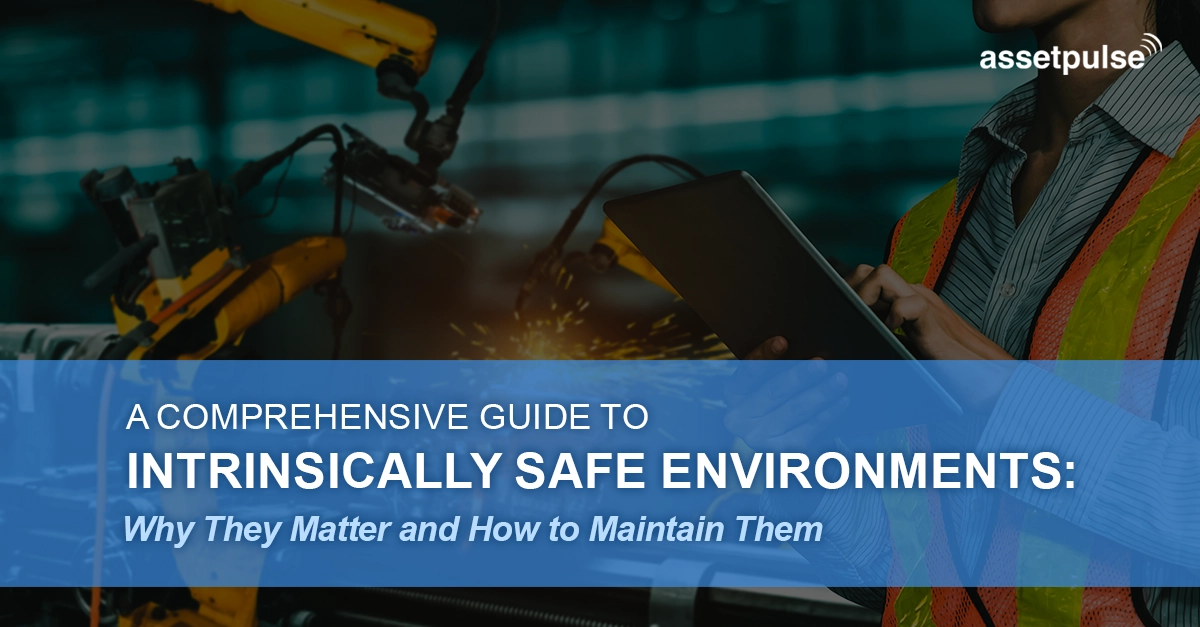Industries like oil and gas, pharmaceuticals, mining, and chemical processing operate in hazardous environments that demand stringent safety measures. These settings often contain flammable gases, vapors, or combustible dust, making conventional operations risky. This is where intrinsically safe environments become critical. But what exactly are they? and why are they so essential? Let’s explore.
What is an Intrinsically Safe Environment?
An intrinsically safe environment minimizes the risk of explosions by limiting electrical and thermal energy to levels that cannot ignite hazardous materials. In such environments, all equipment and systems are meticulously designed to prevent sparks, overheating, or electrical failures.
This concept emerged as industries grew increasingly aware of the catastrophic consequences of accidents in hazardous areas. Intrinsic safety gained traction as a vital safety approach, supported by evolving standards and regulations.
Industries That Require Intrinsically Safe Environments
Several industries rely on intrinsically safe solutions to protect their workforce and assets:
- Oil and Gas: Refineries, offshore platforms, and drilling sites deal with flammable gases and vapors.
- Pharmaceuticals: Cleanrooms and labs handling reactive chemicals prioritize explosion-proof measures.
- Mining: Underground operations with gases like methane require intrinsically safe tools.
- Chemical Processing: Plants managing volatile liquids and gases need certified equipment to prevent accidents.
- Manufacturing: Facilities with combustible dust or volatile organic compounds (VOCs) depend on intrinsically safe systems.
Emerging sectors like battery manufacturing and hydrogen production also increasingly demand intrinsically safe environments due to new volatile materials and processes.
Challenges in Maintaining Intrinsically Safe Environments
1. Complex Compliance Standards
Adhering to regulations like ATEX, IECEx, or Class 1 Div 1 and Class 1 Div 2 compliance under NEC 500-506 can be daunting due to varying requirements across industries and regions. Frequent updates to these standards add another layer of complexity. It is also very expensive for manufacturers to comply with the requirements and then to go through the certification process.
2. Costly Equipment
Intrinsically safe devices often come with high manufacturing and maintenance costs. While this is a significant investment, it ensures worker safety and operational integrity.
3. Workflow Disruptions
Operational inefficiencies may arise when equipment fails to meet safety standards, leading to downtime and costly delays.
Navigating Cross-Zone Equipment Challenges
Moving tools between normal and hazardous zones presents unique compliance challenges. For instance, diagnostic tools used in control rooms may also need to operate in hazardous environments like oil refineries. Ensuring these tools remain compliant across zones is a significant hurdle.
Solutions to Address Cross-Zone Challenges
- Dual-Certified Equipment: Tools designed for both standard and hazardous zones eliminate the need for separate devices, simplifying operations.
- Intrinsically Safe Barriers: These barriers limit electrical energy, allowing non-certified tools to be used safely in hazardous areas.
- Employee Training: Workers must understand protocols for safely transitioning equipment between zones. Continuous training ensures employees stay updated on the latest safety procedures.
The Role of Technology in Intrinsically Safe Environments
Advancements like IoT and digital transformation are reshaping intrinsic safety. For example, IoT-enabled sensors can monitor hazardous zones in real time, ensuring immediate detection of unsafe conditions. Digital dashboards can also streamline compliance tracking and equipment certification management.
Regulatory Standards for Intrinsically Safe Environments
To create a safe workspace, adherence to the following standards is essential:
- ATEX Directive: Regulates safety in explosive atmospheres across Europe.
- IECEx Certification: A global system for certifying equipment used in hazardous environments.
- UL Standards: Focus on fire and electrical safety, predominantly in North America.
- Class 1 Div 1 and Class 1 Div 2 Compliance (NEC 500-506): Ensures equipment safety in hazardous locations with flammable gases, vapors, and dust in North America, as per NEC and NFPA guidelines.
Compliance with these standards isn’t just about safety—it’s about operational integrity and maintaining a reputation for reliability. With regulations frequently evolving, it’s crucial to stay current with the latest revisions and adaptations.
Intrinsic safety is not just a regulatory requirement but a commitment to protecting lives and assets in hazardous industries. By embracing advanced technologies, adhering to global standards, and investing in employee training, businesses can ensure a safe and efficient working environment.
Are your operations ready for the future of intrinsic safety? Start evaluating your compliance today to secure a safer tomorrow.
FAQs
What is an intrinsically safe environment?
An intrinsically safe environment prevents ignition risks by controlling electrical and thermal energy. These systems protect against explosions, especially in areas with flammable materials.
Why is intrinsic safety crucial for industries?
Intrinsic safety ensures compliance with global safety standards, prevents accidents, and enhances operational efficiency in sectors like oil and gas, pharmaceuticals, and manufacturing.
How do certifications like ATEX, IECEx, UL, and Class 1 Div 1/Div 2 help?
These certifications verify that equipment meets rigorous safety standards, offering operators peace of mind and simplifying regulatory compliance. They also help ensure that operations remain uninterrupted by safety incidents.


